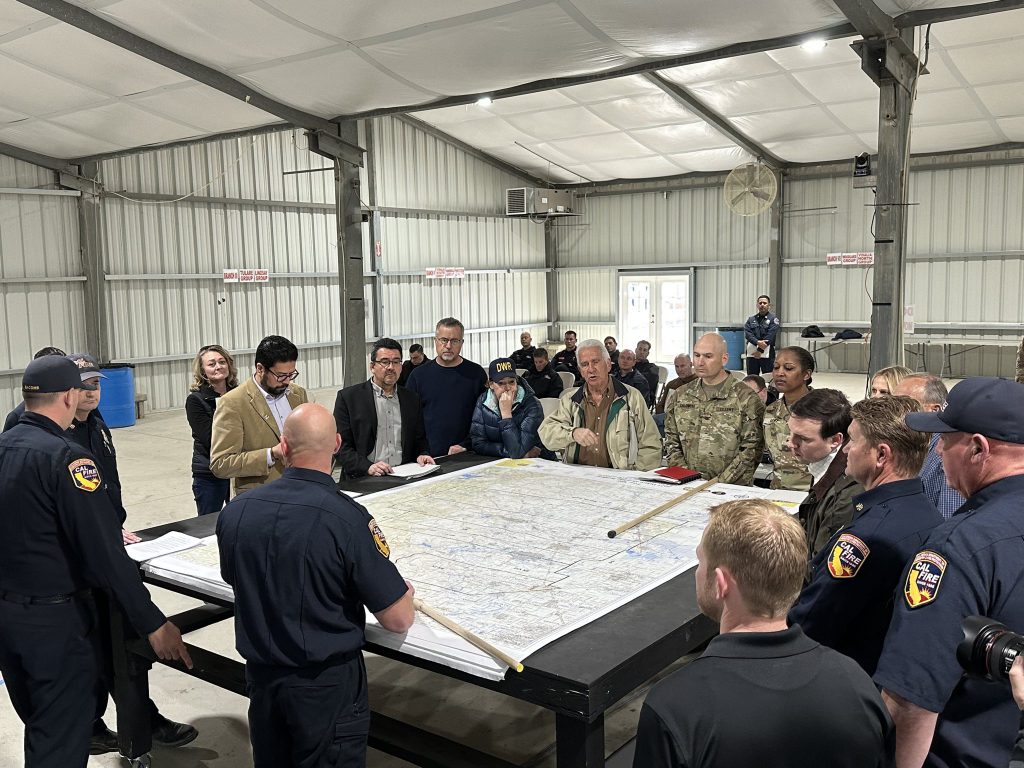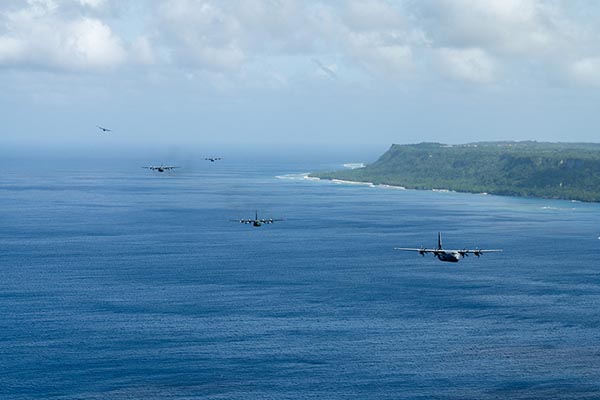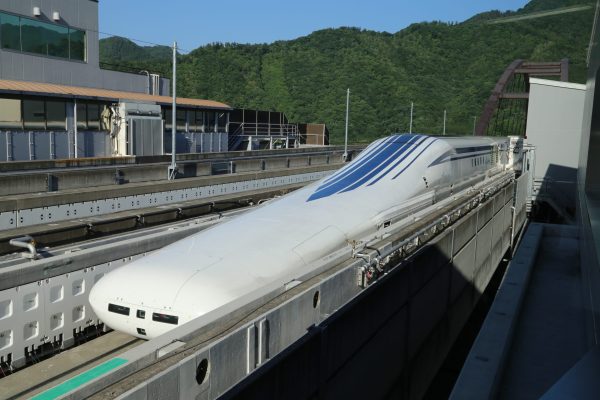The Honorable Michael Connor, Assistant Secretary of the Army for Civil Works

TME: Can you describe the mission and goals of the Civil Works Program?
Connor: Administered through the U.S. Army Corps of Engineers (USACE), the Civil Works Program plans, designs, builds, operates, and maintains water resource projects that provide flood risk management; maintain navigation at ports, harbors, and inland waterways; and restore aquatic ecosystems. USACE also provides recreation facilities and services at more than 400 lake and river projects in 43 states; is the nation’s leading hydropower producer; supplies water to many communities; and is typically among the first to respond to an array of natural disasters.
The Corps has a highly visible role in carrying out the water resources regulatory programs that it implements, primarily under the Clean Water Act and the Rivers and Harbors Act.
TME: How have your career experiences and previous positions shaped your approach to your role?
Connor: I am an engineer by training with a degree in chemical engineering and worked in the private sector for four years. This was followed by a law degree that focused on environmental and natural resources issues, leading to my interest in melding science, policy, and law to try and serve societal needs.
“We need the private sector to help us undertake this huge workload and, where possible, be more innovative and efficient in our execution.”
I started my government career with the Department of the Interior, where I served in the solicitor’s office and then led the Secretary’s Indian Water Rights Office. After that, I served as counsel to the Senate Energy and Natural Resources Committee, running the Water & Power Subcommittee with oversight of the Bureau of Reclamation. I also was responsible for a number of Corps of Engineers matters and worked the committee’s Native American issues, given my Tribal ancestry and enrollment as a member of Taos Pueblo.
At the start of the Obama Administration, I was asked to run the Bureau of Reclamation and led the agency’s mission to manage, develop, and protect water and related resources. Then, five years later, during the second term of the administration, I served as the Deputy Secretary of the Interior. During my tenure at Interior, I worked closely with USACE, coordinating operations and trying to integrate climate change resilience into our operations. These experiences provided me with an understanding of the Civil Works Program as well as an appreciation of the many demands on our water resources.
TME: How is the Civil Works Program helping build resilient communities across the nation?
Connor: This comes back to the importance of partnerships where our mission and expertise intersect with the vision of a community. Fundamentally, the Corps has always been in the resilience business, working with communities to protect them from weather extremes. Those extremes are becoming more of the norm, increasing the importance of the work we do. Alongside our partners, USACE integrates the realities of a changing climate into the plans, designs, and implementation of projects that support economic activity, improve quality of life, and, overall, enhance the way we manage our water resources.
The Corps strengthens the nation’s supply chains by improving and maintaining navigable waterways and coastal ports, which allows for the movement of cargo with a lower carbon footprint. The Corps also provides flood protection and helps communities deal with the growing risks to our coastlines posed by rising sea levels and increased storm surges. Working with communities to become more drought resilient is an opportunity that we must be better prepared to address, and I am working with the Corps on how we can best prepare for the future.
Recent efforts on environmental justice are broadening our understanding that resiliency is also defined by community values. When you look at our investments through the Infrastructure Investment & Jobs Act (IIJA), we chose a lot of projects that directly benefit historically disadvantaged communities, including Tribal Nations. Through all our projects, the Corps is committed to resilience and adaptation to be better prepared for the challenges from a changing climate. USACE also is working to more efficiently deliver permitting actions to facilitate community-led projects and economic development while maintaining the protection of our crucial but finite water resources.

TME: How have recent legislative changes and increased funding levels impacted the Civil Works Program?
Connor: Over the past five to six years, the Corps has received approximately $100 billion in funding to carry out all aspects of its mission. The typical annual appropriations is around $8 billion, so the recent funding, in part driven by disaster supplementals as well as the infrastructure bill, has been a significant increase that has necessitated a transition in how we do business and execute our mission.
In particular, the IIJA has given an exponential lift to a lot of important priorities. We were able to respond with investments some thought out of reach but that are among the nation’s highest priorities. These include reinvestments and building new capacity in our inland waterway system, important work in expanding the capacity of ports, and proceeding with flood protection and multi-benefit projects for historically marginalized communities. We are also making record investments in the restoration of aquatic ecosystems and carrying out some innovative activities including in the Chesapeake Bay such as rebuilding islands using dredged material. And we are doing work to protect Tribes and enhance cultural resources. It is an impressive set of investments across the board.
The Water Resources Development Act of 2022 authorized 94 new feasibility studies and 25 new construction projects for the Corps. The workload continues to increase even as we execute a record level of funding. Our mission is evolving through legislative changes as well, like the Water Infrastructure Finance and Innovation Act, which gave us the authority to establish a loan program that supports non-federal dam safety projects.
TME: What are some technological innovations being leveraged to protect and manage water resources?
Connor: There is no question that we need to continue to improve how we anticipate and prepare for increasing risks in a climate- impacted world, and then need to develop and incorporate new tools in addressing those risks. Innovation is key to this effort and the basis for the inclusion of the largest research and development expenditure in the history of the Army’s Civil Works budget. These resources, $86 million as proposed, will build upon continual work with state, tribal, and local partners to get better tools in place to improve our management of water resources. We need better forecasts to help with drought operations, and so we have initiated a pilot program to use forecast informed reservoir operations, which will help us better manage our reservoirs based on current and forecasted conditions.
Engineering With Nature is another program we are using to better integrate natural and nature-based solutions with gray infrastructure to address community resilience needs. By increasing our understanding of the performance of these green solutions, we can more effectively meet the demands of communities that want to see more integrated solutions—but still need the protection that traditionally hardened solutions typically provide. Overall, the focus of this work will be on innovative solutions that will address the emerging water resource challenges of the next century, including climate change.
TME: What are some of the leading indicators of successful project delivery within Civil Works?
“Fundamentally, the Corps has always been in the resilience business, working with communities to protect them from weather extremes. Those extremes are becoming more of the norm, increasing the importance of the work we do.”
Connor: Working seamlessly with communities and both federal and non-federal partners is key to successful project delivery. Many of the investments we have made through the IIJA recently, or will soon, have been put to use as a result of signed project partnership agreements that enable us to advance design and construction of these vital projects.
We are using many of the tools that Congress has provided to share the burden through public-private partnerships. The most successful project delivery is through communities, sister federal agencies, partners, and contractors. All play a crucial role in the development, implementation, and operations of Civil Works projects by providing a shared vision, resources, and expertise.
We are doing our best to get funding to projects quickly and already have allocated 90 percent of the $17.1 billion provided by the IIJA so work is executed on time and within budget. Delivering projects that enable community resilience is key to a successful Civil Works Program.
TME: What do you see as the biggest challenges and opportunities ahead for water infrastructure investment?
Connor: Our biggest challenge is also our greatest opportunity: how do we use the resources and missions entrusted to us to more quickly meet the growing demand for engineered solutions while, at the same time, addressing historical inequities? The IIJA presents a huge opportunity to make a difference in water resource issues across the nation.
As we continue to advance critical projects with this funding, we are working to solve an increasingly complex array of water resource challenges and promote resilience in communities. This requires us to address the problem on many levels. For example, we are working to tackle long-standing policy issues on how we evaluate our projects and the comprehensive benefits they provide. The goal is to better value and integrate environmental and social benefits, along with traditional economic benefits. I have issued memorandums on environmental justice and expanding the Tribal Partnership Program within existing authorities. As we further implement these and other improvements, I anticipate more robust solutions.
Recent repetitive atmospheric river events have highlighted how more extreme weather presents new challenges to infrastructure. I was in California recently celebrating the improvements at Isabella Dam, northeast of Bakersfield. These improvements are extremely timely, as they will allow us to hold more water in the reservoir to contend with recent precipitation after years of drought. Completing projects and developing new approaches to expedite our execution of ongoing projects is an imperative.
Finally, we are dealing with cost increases and supply chain issues, just like everyone else, but we will continue to work within the Biden-Harris Administration and with Congress to address these challenges while focusing on execution.

TME: Where can industry best help provide value to the Civil Works Program?
Connor: What happened in the middle Mississippi River this past winter provides a positive example of a strong Industry- Civil Works partnership. This significant drought event impacted navigation and the ability of the nation’s farmers to get their goods to market at a crucial time. We were dealt difficult cards with low water levels, but rather than debate, we found ways to strengthen collaboration. Industry played a huge role in helping both USACE and the U.S. Coast Guard understand where we were having issues along the river and how best to coordinate our responses.
Our industry partners also are key to helping us execute the significant portfolio of the Civil Works Program and provide on-the-ground experience to inform policy approaches. We appreciate the communication, support, and partnership that industry has provided as we work to implement a growing portfolio of projects across the nation. We need the private sector to help us undertake this huge workload and, where possible, be more innovative and efficient in our execution.
TME: How can organizations like SAME support the Civil Works Program and the Corps of Engineers?
Connor: Recruitment! As I have mentioned, we have a huge task at hand to execute the funding that we have been given. We need more talent representing the diversity of society to help accomplish this work and are always looking for great people to join our team, and also to work alongside our team as we execute our crucial missions.
Public service has many rewards, and the Army’s Civil Works program provides the opportunity to do some of the most challenging and creative technical work in the world!
The Honorable Michael Connor was sworn in as the Assistant Secretary of the Army (Civil Works) in November 2021 and serves as the principal advisor to the Secretary of the Army on all matters related to the Civil Works Program, including conservation and development of the nation’s water and wetland resources, flood control, navigation, and shore protection. Prior to his confirmation, he was a partner at the WilmerHale law firm, focusing on natural resources, renewable energy development, environmental compliance, and Native American law. During the Obama Administration, he served as Deputy Secretary of the Interior, where he was the Chief Operating Officer and the first person of Native American descent to serve in that position. Prior to that, he served as Commissioner of the Bureau of Reclamation. He holds a law degree from the University of Colorado Law School, and earned a bachelor’s in Chemical Engineering from New Mexico State University.
More News from TME
-

Assessing Mobile Nuclear Reactor Usage in the Pacific
A research team at the Air Force Institute of Technology carried out a lifecycle assessment of the environmental impacts, operational viability, and logistical considerations of mobile nuclear reactors in the Indo-Pacific. -

Embracing Modern Mass Communications Systems
Modern mass communication systems utilizing Internet Protocol-based adoption offer many benefits over legacy analog systems for military bases, including critical issues of security, functionality, and compliance to meet evolving expectations, standards, and safety requirements. -

Developing a Maglev Network for National Defense
A transportation network leveraging superconducting magnetic levitation technologies would bring benefits for logistics, surface transportation, and energy storage, as well as strengthen national defense priorities and the defense industrial base.